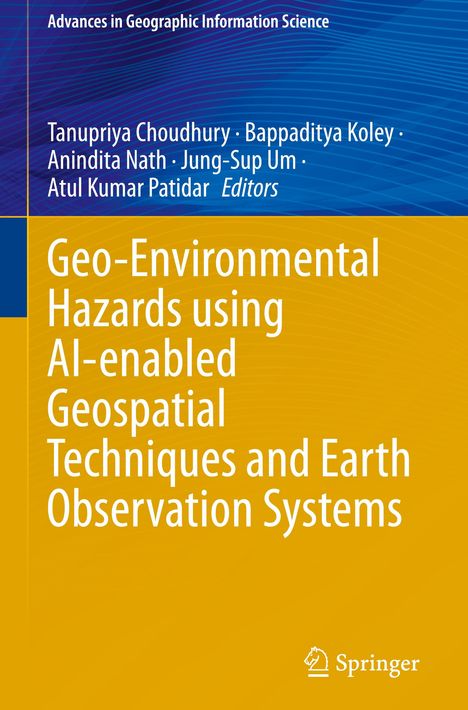Geo-Environmental Hazards using AI-enabled Geospatial Techniques and Earth Observation Systems, Gebunden
Geo-Environmental Hazards using AI-enabled Geospatial Techniques and Earth Observation Systems
(soweit verfügbar beim Lieferanten)
- Herausgeber:
- Tanupriya Choudhury, Bappaditya Koley, Atul Kumar Patidar, Jung-Sup Um, Anindita Nath
- Verlag:
- Springer International Publishing, 05/2024
- Einband:
- Gebunden, HC runder Rücken kaschiert
- Sprache:
- Englisch
- ISBN-13:
- 9783031537622
- Artikelnummer:
- 11881725
- Umfang:
- 328 Seiten
- Nummer der Auflage:
- 2024
- Ausgabe:
- 2024
- Gewicht:
- 718 g
- Maße:
- 241 x 160 mm
- Stärke:
- 23 mm
- Erscheinungstermin:
- 28.5.2024
- Hinweis
-
Achtung: Artikel ist nicht in deutscher Sprache!
Klappentext
This edited collection provides a comprehensive exploration of cutting-edge ideas, approaches, simulations, evaluations of risk, and systems that enhance the practicality of current geospatial technologies for reducing hazard risks. The various sections within this book delve into subjects such as the foundational principles of Earth Observation Systems (EOS) and geospatial methodologies. Additionally, the text serves as an advisory resource on the collaborative use of satellite-derived data and artificial intelligence to track and alleviate geo-environmental threats. The volume imparts extensive understanding regarding geo-environmental dangers and their analysis via EOS along with geospatial strategies. It encompasses key hazard-related themes including coastal degradation, predisposition to landslides, mapping vegetation coverages, tropical storm patterns, soil depletion due to erosion processes, vulnerability to rapid or extended flooding events, variations in oceansurface temperatures alongside chlorophyll-a levels; it also addresses assessments related to groundwater reserves and quality measures as well as sustainable management practices for watersheds that support community livelihoods¿all through leveraging AI-integrated geospatial tools in conjunction with earth observation technologies. Furthermore, this work engages in discourse about systems designed for mitigating these ecological challenges sustainably. Scholars engaged in research activities; educational professionals; those involved in landscape design; engineers working at ground level; individuals responsible for policy-making¿all who are concerned with geo-environmental hazards or associated domains¿will find valuable insights within these pages.

